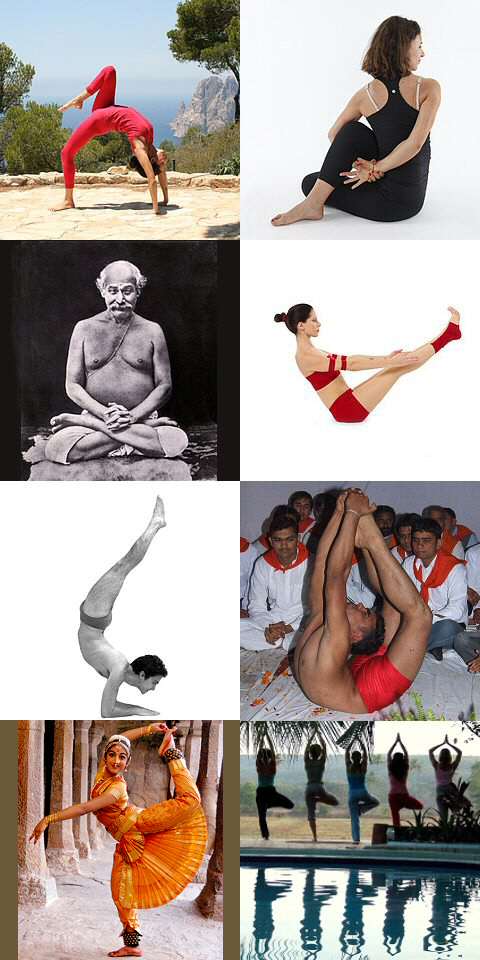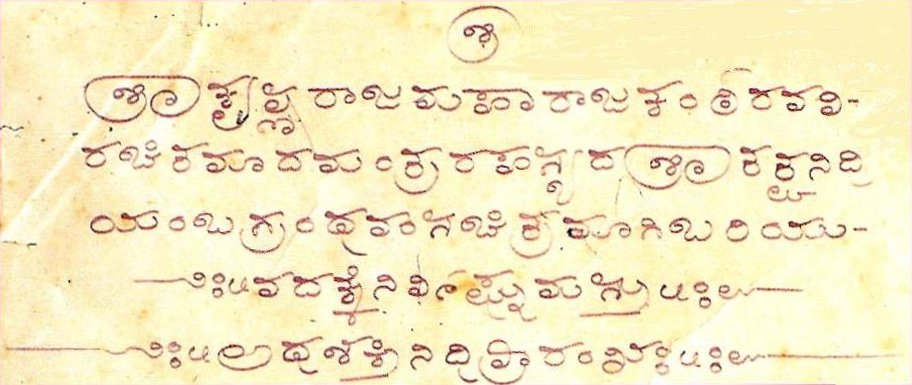|
Natarajasana
Natarajasana ( sa, नटराजासन, translit=Naṭarājāsana), Lord of the Dance Pose or Dancer Pose is a standing, balancing, back-bending asana in modern yoga as exercise. It is derived from a pose in the classical Indian dance form Bharatnatyam, which is depicted in temple statues in the Nataraja Temple, Chidambaram. Nataraja, the "Dancing King", is in turn an aspect of the Hindu God Shiva, depicted in bronze statues from the Chola dynasty. The asana was most likely introduced into modern yoga by Krishnamacharya in the early 20th century, and taken up by his pupils, such as B. K. S. Iyengar, who made the pose his signature. Natarajasana is among the yoga poses often used in advertising, denoting desirable qualities such as flexibility and grace. Etymology and mythology The name comes from the Sanskrit epithet Nataraja, "Dancing King", one of the names given to the Hindu God Shiva in his form as the cosmic dancer, and आसन ''asana'' meaning "posture" or "se ... [...More Info...] [...Related Items...] OR: [Wikipedia] [Google] [Baidu] |
Nataraja
Nataraja () also known as Adalvallaan () is a depiction of the Hindu god Shiva as the divine cosmic dancer. His dance is called Tandava.''Encyclopædia Britannica'' (2015) The pose and artwork are described in many Hindu texts such as the ''Tevaram'', ''Thiruvasagam'' in Tamil and ''Anshumadbhed agama'' and ''Uttarakamika agama'' in Sanskrit and Grantha texts, the dance murti featured in all major Hindu temples of Shaivism, and is a well-known sculptural symbol in India and popularly used as a symbol of Indian culture, in particular as one of the finest illustrations of Hindu art. He is commonly referred as Koothan(), Sabesan() and Ambalavanan () in various Tamil texts. The sculpture is symbolic of Shiva as the lord of dance and dramatic arts, with its style and proportions made according to Hindu texts on arts. Tamil Devotional texts such as Tirumurai (The twelve books of Southern Shaivism) speaks that Nataraja is the form of Shiva in which he does Creation, destruction, Pres ... [...More Info...] [...Related Items...] OR: [Wikipedia] [Google] [Baidu] |
Asana
An asana is a body posture, originally and still a general term for a sitting meditation pose,Verse 46, chapter II, "Patanjali Yoga sutras" by Swami Prabhavananda, published by the Sri Ramakrishna Math p. 111 and later extended in hatha yoga and modern yoga as exercise, to any type of position, adding reclining, standing, inverted, twisting, and balancing poses. The ''Yoga Sutras of Patanjali'' define "asana" as " position thatis steady and comfortable". Patanjali mentions the ability to sit for extended periods as one of the eight limbs of his system. Patanjali ''Yoga sutras'', Book II:29, 46 Asanas are also called yoga poses or yoga postures in English. The 10th or 11th century '' Goraksha Sataka'' and the 15th century '' Hatha Yoga Pradipika'' identify 84 asanas; the 17th century ''Hatha Ratnavali'' provides a different list of 84 asanas, describing some of them. In the 20th century, Indian nationalism favoured physical culture in response to colonialism. In that enviro ... [...More Info...] [...Related Items...] OR: [Wikipedia] [Google] [Baidu] |
Bharatanatyam
Bharatanatyam () is a major form of Indian classical dance that originated in Tamil Nadu. It is one of the eight widely recognized Indian classical dance forms, and expresses South Indian religious themes and spiritual ideas, particularly of Shaivism and in general of Hinduism.Bharata-natyam ''Encyclopædia Britannica''. 2007 A description of Bharatanatyam from the 2nd century CE can be found in the ancient Tamil epic ''Silappatikaram'', while temple sculptures of the 6th to 9th century CE suggest it was a highly refined performance art by the mid-1st millennium CE. Bharatanatyam is the oldest classical dance tradition in India. Bharatanatyam is the state dance form of Tamil Nadu. Bharatanatyam contains different types of ''baanis''. ''Ba ... [...More Info...] [...Related Items...] OR: [Wikipedia] [Google] [Baidu] |
Bharatnatyam
Bharatanatyam () is a major form of Indian classical dance that originated in Tamil Nadu. It is one of the eight widely recognized Indian classical dance forms, and expresses South Indian religious themes and spiritual ideas, particularly of Shaivism and in general of Hinduism.Bharata-natyam ''Encyclopædia Britannica''. 2007 A description of Bharatanatyam from the 2nd century CE can be found in the ancient Tamil epic '''', while temple sculptures of the 6th to 9th century CE suggest it was a highly refined performance art by the mid-1st millennium CE. Bharatanatyam is the oldest classical dance tradit ... [...More Info...] [...Related Items...] OR: [Wikipedia] [Google] [Baidu] |
Elliott Goldberg
''The Path of Modern Yoga: The History of an Embodied Spiritual Practice'' is a 2016 history of the modern practice of postural yoga by the yoga scholar Elliott Goldberg. It focuses in detail on eleven pioneering figures of the transformation of yoga in the 20th century, including Yogendra, Kuvalayananda, Pant Pratinidhi, Krishnamacharya, B. K. S. Iyengar and Indra Devi. The book's thesis is that modern yoga progressed in three stages from its pre-1900 state to what is observed today. Before 1900, haṭha yoga was the despised religious practice of a small minority on the fringes of Indian society. In the first stage, pioneers such as Yogendra and Kuvalayananda treated yoga as the subject of medical inquiry, making it both secular and socially acceptable. Next, advocates of exercise brought standing poses from gymnastics into yoga: Pant Pratinidhi advocated Surya Namaskar (the sun salutation), a jumped sequence of poses, as daily exercise, while Krishnamacharya incorporated tho ... [...More Info...] [...Related Items...] OR: [Wikipedia] [Google] [Baidu] |
Tandava
Tandava (also spelled as ) also known as , is a divine dance performed by Hindu god Shiva. Shiva is depicted as dancing the Tandava in his form of Nataraja. The ''Natya Shastra'', a Sanskrit treatise on the performing arts describes various aspects of the Tandava. Description Tandava, as performed in the sacred dance-drama of India, has vigorous, brisk movements. Performed with joy, the dance is called '' Ananda Tandava''. Performed in a violent mood, the dance is called ''Raudra'' or ''Rudra Tandava''. The types of Tandava found in the Hindu texts are: Ananda Tandava, Tripura Tandava, Sandhya Tandava, Samhara Tandava, Kali (Kalika) Tandava, Uma Tandava, Shiva Tandava, Krishna Tandava and Gauri Tandava. Shivani Tandava is described as a vigorous dance that is the source of the cycle of creation, preservation and dissolution. While the ''Rudra Tandava'' depicts his violent nature, first as the creator and later as the destroyer of the universe, even of death itself, the ''An ... [...More Info...] [...Related Items...] OR: [Wikipedia] [Google] [Baidu] |
Sritattvanidhi
The ''Sritattvanidhi'' (, "The Illustrious Treasure of Realities") is a treatise written in the 19th century in Karnataka on the iconography and iconometry of divine figures in South India. One of its sections includes instructions for, and illustrations of, 122 hatha yoga postures. Authorship The ''Sritattvanidhi'' is attributed to the then Maharaja of Mysore, Krishnaraja Wodeyar III (b. 1794 - d. 1868). The Maharaja was a great patron of art and learning, and was himself a scholar and writer. Around 50 works are ascribed to him. The first page of the ''Sritattvanidhi'' attributes authorship of the work to the Maharaja himself: {{quote, ''May the work Sri Tattvanidi, which is illustrated and contains secrets of mantras and which is authored by King Sri Krishna Raja Kamteerava, be written without any obstacle. Beginning of Shaktinidhi.''{{sfn, Wodeyar, 1997, loc=Shakti nidhi Martin-Dubost's review of the history of this work says that the Maharaja funded an effort to put tog ... [...More Info...] [...Related Items...] OR: [Wikipedia] [Google] [Baidu] |
Modern Yoga
Modern yoga is a wide range of yoga practices with differing purposes, encompassing in its various forms yoga philosophy derived from the Vedas, physical postures derived from Hatha yoga, devotional and tantra-based practices, and Hindu nation-building approaches. The scholar Elizabeth de Michelis proposed a 4-part typology of modern yoga in 2004, separating modern psychosomatic, denominational, postural, and meditational yogas. Other scholars have noted that her work stimulated research into the history, sociology, and anthropology of modern yoga, but have not all accepted her typology. They have variously emphasised modern yoga's international nature with its intercultural exchanges; its variety of beliefs and practices; its degree of continuity with older traditions, such as ancient Indian philosophy and medieval Hatha yoga; its relationship to Hinduism; its claims to provide health and fitness; and its tensions between the physical and the spiritual, or between the esoteric ... [...More Info...] [...Related Items...] OR: [Wikipedia] [Google] [Baidu] |
Sivananda
Sivananda Saraswati (or Swami Sivananda; 8 September 1887 – 14 July 1963) was a yoga guru, a Hindu spiritual teacher, and a proponent of Vedanta. Sivananda was born Kuppuswami in Pattamadai, in the Tirunelveli district of Tamil Nadu. He studied medicine and served in British Malaya as a physician for several years before taking up monasticism. He was the founder of the Divine Life Society (DLS) in 1936, Yoga-Vedanta Forest Academy (1948) and author of over 200 books on yoga, Vedanta, and a variety of subjects. He established Sivananda Ashram, the headquarters of the DLS, on the bank of the Ganges at Muni Ki Reti, from Rishikesh, and lived most of his life there. Sivananda Yoga, the yoga form propagated by his disciple Vishnudevananda, is now spread in many parts of the world through Sivananda Yoga Vedanta Centres. These centres are not affiliated with Sivananda's ashrams, which are run by the Divine Life Society. Biography Early life Swami Sivananda was born as K ... [...More Info...] [...Related Items...] OR: [Wikipedia] [Google] [Baidu] |
Light On Yoga
''Light on Yoga: Yoga Dipika'' (Sanskrit: योग दीपिका, "Yoga Dīpikā") is a 1966 book on the Iyengar Yoga style of modern yoga as exercise by B. K. S. Iyengar, first published in English. It describes more than 200 yoga postures or asanas, and is illustrated with some 600 monochrome photographs of Iyengar demonstrating these. The book has been described as the 'bible of modern yoga', and its presentation of the asanas has been called "unprecedented" and "encyclopedic". It has been translated into at least 23 languages and has sold over three million copies. Context Yoga is a group of physical, mental, and spiritual practices from ancient India, forming one of the six orthodox schools of Hindu philosophical traditions. In the Western world, however, yoga is often taken to mean a modern form of medieval Hatha yoga, practised mainly for exercise, consisting largely of the postures called asanas. B. K. S. Iyengar (1918-2014) was born in a poor family ... [...More Info...] [...Related Items...] OR: [Wikipedia] [Google] [Baidu] |
Thorsons
HarperCollins Publishers LLC is one of the Big Five English-language publishing companies, alongside Penguin Random House, Simon & Schuster, Hachette, and Macmillan. The company is headquartered in New York City and is a subsidiary of News Corp. The name is a combination of several publishing firm names: Harper & Row, an American publishing company acquired in 1987—whose own name was the result of an earlier merger of Harper & Brothers (founded in 1817) and Row, Peterson & Company—together with Scottish publishing company William Collins, Sons (founded in 1819), acquired in 1989. The worldwide CEO of HarperCollins is Brian Murray. HarperCollins has publishing groups in the United States, Canada, the United Kingdom, Australia, New Zealand, Brazil, India, and China. The company publishes many different imprints, both former independent publishing houses and new imprints. History Collins Harper Mergers and acquisitions Collins was bought by Rupert Murdoch's News Corpora ... [...More Info...] [...Related Items...] OR: [Wikipedia] [Google] [Baidu] |

.jpg)

.jpg)




